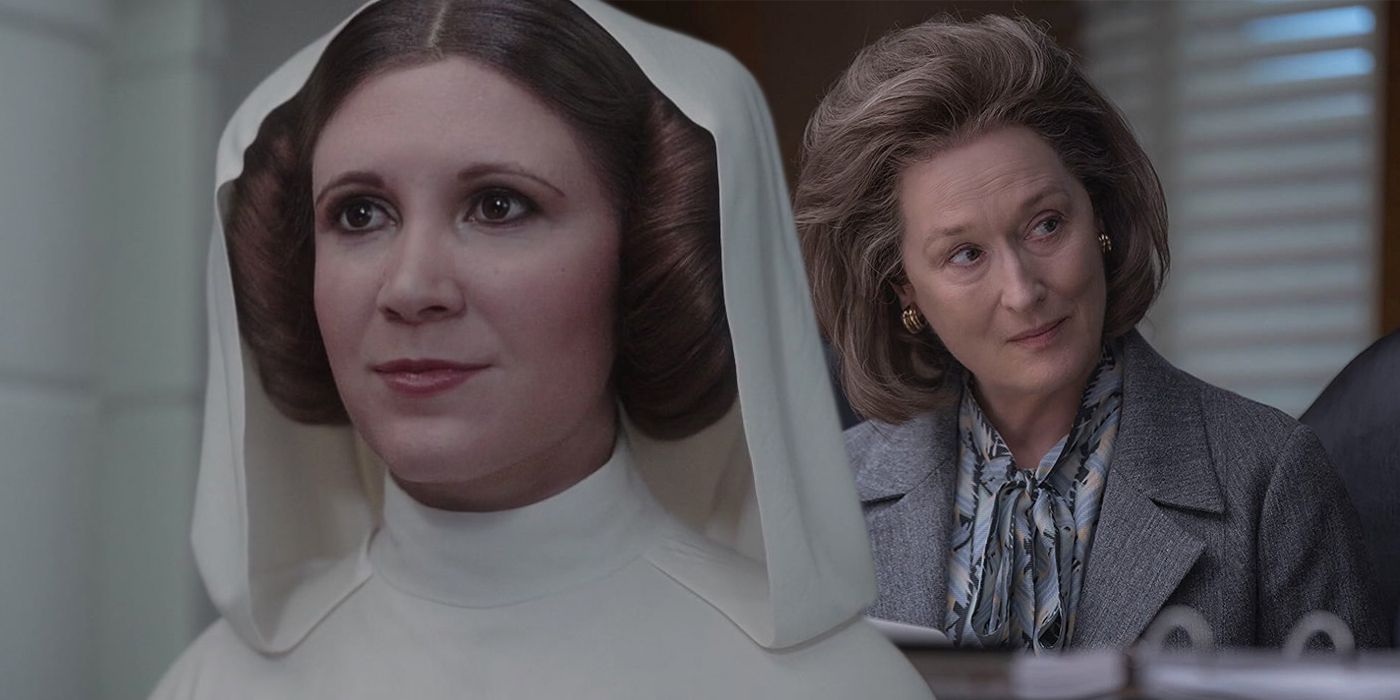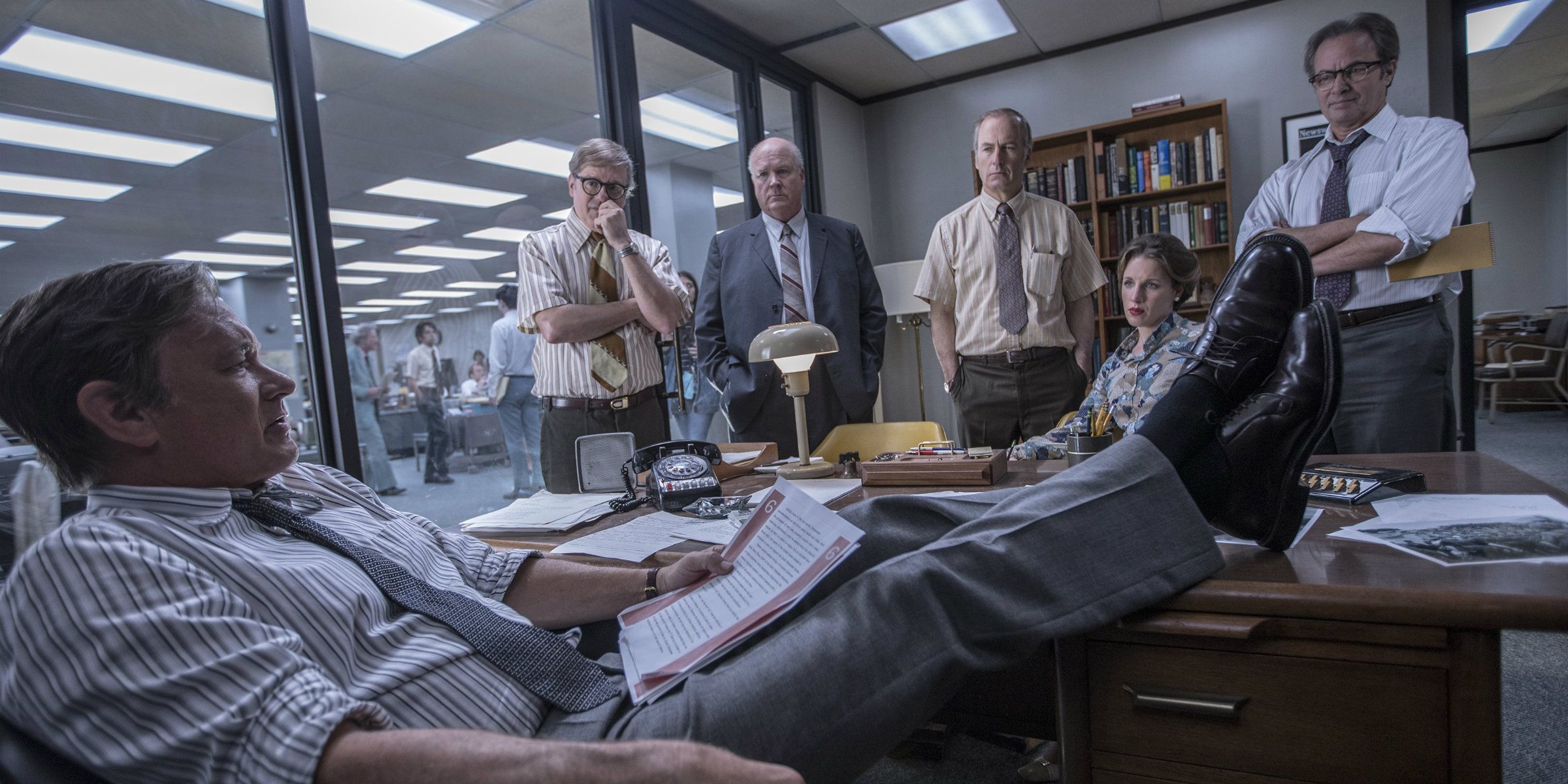The Post, Stephen Speilberg's Oscar contender, and Rogue One, the war-movie hued Star Wars prequel, share a bizarre parallel: their endings are the same. Of course, on paper, the two films couldn't be more different. One is a dramatization of The Washington Post's conflicted decision to publish the damning Pentagon Papers that revealed manipulation of Vietnam and the American public to force war, while the other a big budget franchise movie about stealing plans for a planet-destroying weapon.
However, there are actually parallels prominent throughout. Both use authentic-feeling war action to accentuate their primary stories, which center on female characters struggling with the decision of whether to take stand against seemingly insurmountable aggressors (the American government and the Galactic Empire respectively) lest they wind up losing the battle forever. They are strong, timely movies, and succeed now thanks to tapping into the zeitgeist; either could be read as a commentary on the rise of President Trump. But that's not what we're wanting to talk about.
Related: Star Wars: Watch Rogue One Lead Into A New Hope
What we're interested in is their endings, which are unbelievably similar in structure, meaning, and relevance to a New Hollywood classic. Rogue One famously closes with all of its main characters dead - literally everyone on the main poster is killed - and then details the minutes leading up to the original Star Wars, with Darth Vader massacring Rebels before the Tantive IV escapes and Leia is handed the Death Star plans. The Post is less showboaty, but no less iconic; after Ben Bradlee and Kay Graham's successful publishing of the Papers and lack of repercussions leave the free press free, we cut away from the main story to a security guard investigating some commotion, slowly revealed to be the break-in at the DNC headquarters at the Watergate.
Again, on paper, these are very different; one of these moments is a bit of fan service while the other a dramatization of one of the most important moments in American history. However, in execution both Gareth Edwards and Steven Spielberg handle them in a very similar manner, taking a tangent from the resolved primary story to reveal its connections to the wider world in a contextually knowing way; the pan out on the Watergate has the exact same effect as the close up of Leia looking up and saying "hope". Together, they're examples of how knowing the outcome of a story, and the author using that to inform the telling, can create a more powerful response.
What's more remarkable, though, is that in taking this approach, both films are bee-lining straight for a 1970s classic. Star Wars, obviously, picks up straight after the end of Rogue One (dramatizing the opening crawl was the entire point of the Anthology film), but The Post is also directly brushing with the plot of All The President's Men, which charted Woodward and Bernstein's investigation into the scandal that eventually led to President Nixon's resignation. This is a very pointed independent move by Spielberg, highlighting the importance of Graham's stand - if she hadn't published the papers, then it's unlikely the free press would have been able to expose Nixon's later misdeeds - and adding a layer of extra tension to Alan J. Pakula's Oscar winner. But, once more, the shared choice says a lot about how context is essential to the reason why we tell stories.
For all their differences, it's intriguing to see Rogue One and The Post execute near identical storytelling tricks. It shows how what's viewed as genre convention or prestige stylings are permutable, and only benefits the pair when put together.
Next: The Post Review: Spielberg’s Triumphant Ode To Journalism


